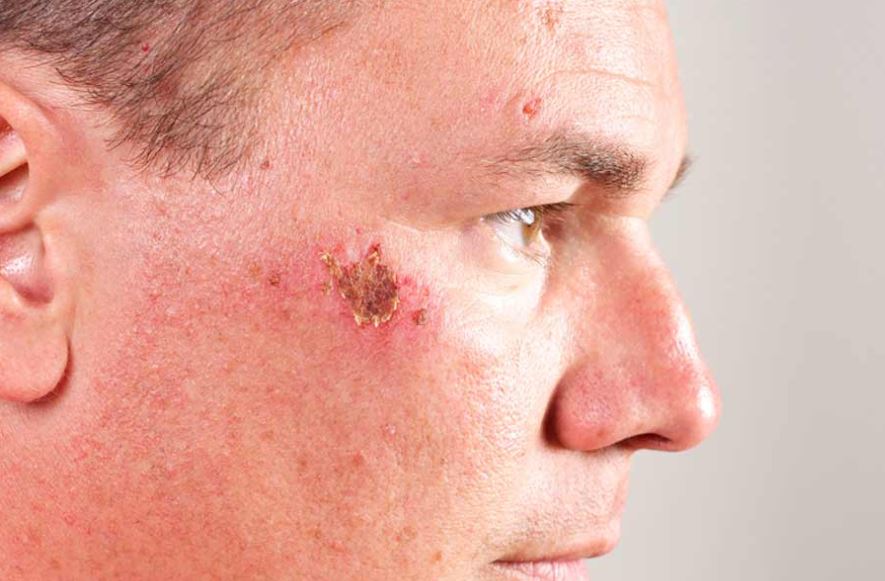Scabs are a form of skin crusting that appears on the face. This skin infection can be caused by a variety of factors including injury or the disruption of the immune system. Other causal factors include viral infections such as Chickenpox, cold sores or shingles. They are also recognized as one of the tell-tale signs of meth abuse.
Why do they form
Table of content
They are the outcome of healing. The body tries to heal from the condition, for instance, acne or blisters. The body tries to heal from the injury by developing a skin over the damaged area. Injuries such as lacerations, blisters, or burns could end up developing scabs as the skin tries to heal from the damage.
Similarly, self-inflicted injury, such as picking acne can lead to wounds that develop into scabs. Also, recurrent breakouts (Psoriasis), bacterial skin infections (impetigo), and allergic reaction can lead to their formation on the affected part.
Their causes on the face are extensive. However, the good news is that there are ways to treat the condition. If the scabs on your face are red, itching, or cause irritation, then you should seek medical care.

Best treatment for scabs on face
Treatment of the scabs on the face generally depends on the causal factor. If you can handle the factor causing the condition, then you can heal them. For instance, if you have eczema, then the formation of scabs on the face, neck, and other areas of the skin is a common condition.
It is advisable not to peel the scabs as the face is healing. If you peel them, you expose the fresh skin forming beneath it thereby prolonging the healing process.
If they are as a result of autoimmune disorders such as Pemphigus Vulgaris, then you need to obtain appropriate treatment for the condition which in turn will reduce their occurrence on the face or affected area. Aside from this, there are a number of approaches you can take to treat them.
Maintain hygiene
Keep the affected area clean by washing your face with an antibacterial soap. After you wash your face, pat-dry using a clean towel. Gently tap them, leaving them a bit damp.
Avoid picking or touching the scabs
This can irritate the skin thereby delaying the healing. If you have an unbearable itch, take a clean, dry washcloth and lightly dab the irritating area. Always remember that any kind of scratching can make the skin turn red or become inflamed.
Bandage them
If you have several scabs on the face, then you can opt to bandage them. This will prevent dirt from irritating the affected area thereby promoting healing. On the other hand, you should regularly change the bandage to prevent infection. Also, go for a non-adhesive bandage.
Try applying creams
Apply the right creams to promote healing. Dab a thin layer of topical creams such as Neosporin or Bacitracin on the affected area. Also, opt for creams containing benzoyl peroxide or salicylic acid as they will accelerate the healing.
Apply Vitamin E, or Apple Cider Vinegar
Vitamin E is a major skin booster and can help accelerate the healing process. You can carefully moisturize the affected area using vitamin E. Apple Cider vinegar also has some excellent skin healing properties and can, therefore, help in the healing process.
Other treatments and remedies
There are other treatment approaches that you may consider trying out. For instance, you can apply Aloe Vera on the scabs. However, if they are deep wound then you should be careful and consult your doctor. Tea tree oil is another great alternative is it can speed up the healing process. For best results, use the tea tree twice a day.
Lastly, you can use Vaseline for fast healing. Vaseline Petroleum Jelly forms a barrier on the affected skin thereby protecting it from infections. Also, the product locks in moisture which is needed to speed up healing.
Is healing scabs on face a challenge?
Scabs on the face are generally difficult to deal with. They require patience as they take some time to heal.
Dry scabs generally take a shorter time to heal. However, if you have dry ones, you can remove them by using the apple cider vinegar. First, wash the affected area with water and a mild soap. Second, take a mixture of diluted apple cider vinegar (1 part Apple cider; 24 part water), and dab on the affected area using a clean cloth.
Those resulting from deep injuries take longer to heal and require medical attention. Other factors of concern include:
- Bleeding that doesn’t appear to stop from the scabs on the face
- Them getting bigger
- The scab is painful or tender
- The scab is pus-filled
Maintain a healthy diet to promote healing. A diet containing essential nutrients such as protein, zinc, vitamin A, and C can help speed the healing process. Also, take lots of water to help keep the skin hydrated.
How long does healing take?
According to the Wound Care Society, those that formed as a result of deep wounds could take several months to heal. The time frame, from the initial development to complete healing, can take about a few days to two weeks. This time frame is for scabs resulting from minor factors such as acne.
However, it depends on the wound care provided as activities such as picking them can prolong healing time.
You should consult your doctor if you experience severe acne that leads to acne scabs.
References:
- Livingsober.com Why Meth Users Have Sores and Scabs on Face
- Healthgrades.com What are Scabs?
- Rightdiagnosis.com Scabs and Face
- Livestrong.com How to Get Rid of Acne Scabs Fast
- Wikihow.com wikiHow to Heal Scabs on Your Face
